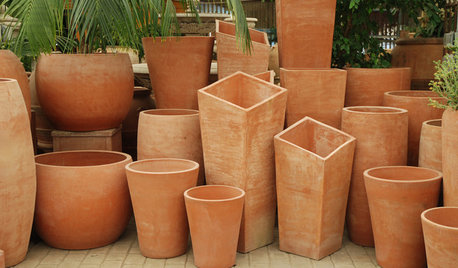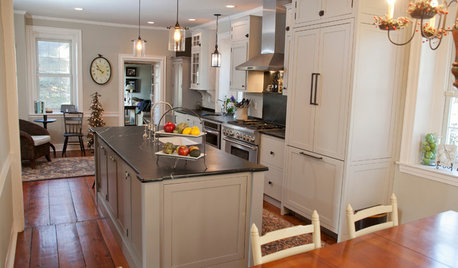Peat-Based Container Mixes
tomat0
12 years ago
Related Stories

FARM YOUR YARDHow to Grow Vegetables in Containers
Get glorious vegetables and fruits on your patio with a pro’s guidance — including his personal recipe for potting mix
Full Story
CONTAINER GARDENSContainer Gardening Basics: The Dirt on Soil
Learn the types of potting soil available and the best mixes to help your containers thrive
Full Story
CONTAINER GARDENSBeat the Frost With Natural Terra-Cotta Containers
Here's how to protect your pots during the cold winter months
Full Story
PLANTING IDEASStretch the Budget, Seasons and Style: Add Conifers to Your Containers
Small, low-maintenance conifers are a boon for mixed containers — and you can transplant them to your garden when they’ve outgrown the pot
Full Story
LIVING ROOMSRoom of the Day: A Meticulous Mix of Styles
A New York designer’s Upper East Side living room hits all the right notes
Full Story
ECLECTIC HOMESHouzz Tour: High-Low Mix in a Colorful Victorian
An unloved house is transformed into a cheerful, versatile home with a blend of design classics, budget pieces and treasured finds
Full Story
KITCHEN CABINETSKitchen Confidential: 7 Ways to Mix and Match Cabinet Colors
Can't decide on a specific color or stain for your kitchen cabinets? You don't have to choose just one
Full Story
TASTEMAKERSA New Decorating Book Celebrates Expert Style Mixing
Old-world classic, traditional and modern elements harmonize in Stephen Sills' gift-worthy new decorating book
Full Story
HOUZZ TOURSMy Houzz: Travel, Art and Creative Layering Mix in Vancouver
Personality reigns in this eclectic Canadian waterfront home, thanks to the owners' artistic approach
Full Story
KITCHEN DESIGNNew and Old Mix It Up in a Historic Farmhouse Kitchen
A couple rethink the kitchen in their Pennsylvania farmhouse to restore authenticity while also creating a space for modern living
Full StorySponsored
Columbus Design-Build, Kitchen & Bath Remodeling, Historic Renovations
More Discussions








calistoga_al ca 15 usda 9
tomat0Original Author
Related Professionals
Hershey Landscape Architects & Landscape Designers · Summit Landscape Architects & Landscape Designers · Forest City Landscape Architects & Landscape Designers · Emmaus Landscape Contractors · Milford Mill Landscape Contractors · Morrisville Landscape Contractors · Oak Forest Landscape Contractors · Post Falls Landscape Contractors · Washington Landscape Contractors · Weslaco Landscape Contractors · New Carrollton Landscape Contractors · Imperial Beach Solar Energy Systems · Weymouth Solar Energy Systems · Wilmington Window Contractors · Woodland Fence Contractorscalistoga_al ca 15 usda 9
tomat0Original Author
emgardener
capoman
stev32k
greengrass12
tapla (mid-Michigan, USDA z5b-6a)
tomat0Original Author
tapla (mid-Michigan, USDA z5b-6a)
tomat0Original Author